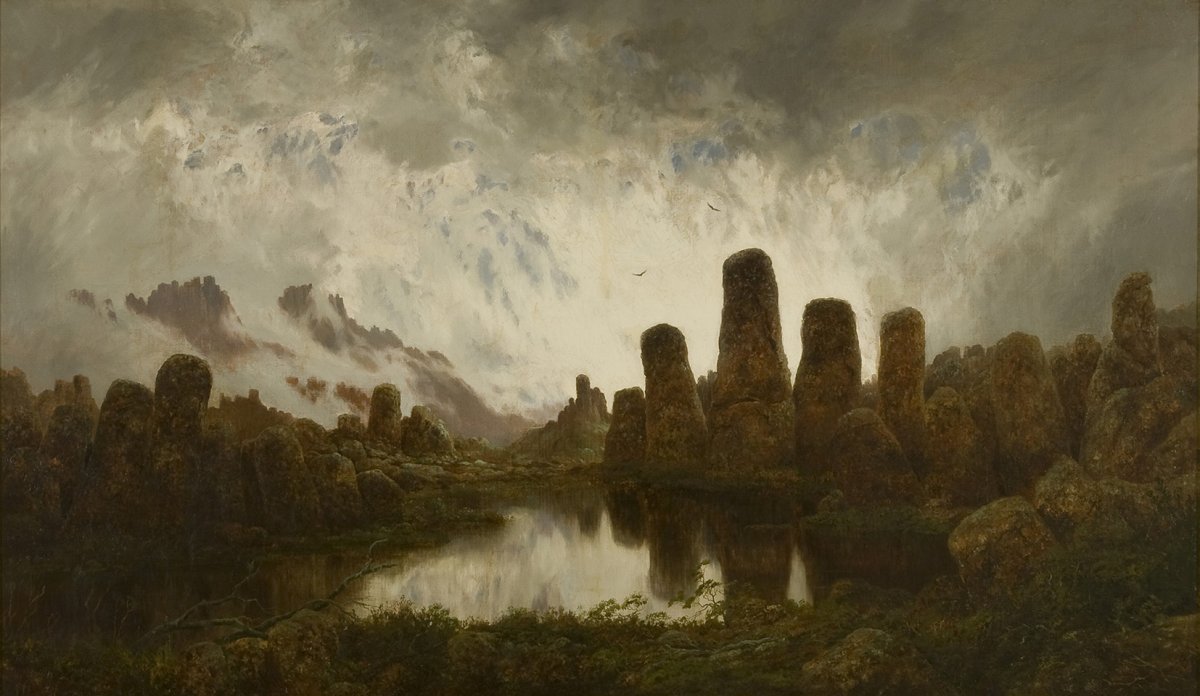The silent wilderness—19th century Australian landscapes
All swirling mists, frosty light and of a weird, almost primordial aspect, William Charles Piguenit’s A mountain top, Tasmania, c. 1886 epitomises that genre of 19th century Australian art that was the subject of this exhibition. This is the genre of wilderness landscape, the representation as conceived by the trained western eye of spectacular antipodean scenery: remote, geographically distinctive, daunting in scale and ostensibly inaccessible (at least, at the time, from a European perspective) to all but intrepid naturalists and explorers whose quest for knowledge of the unknown resonated still with the influential theories of the German naturalist, Alexander von Humboldt (1769–1859).
In the late-1850s, depictions of spectacular wilderness scenes were in great demand within the wider field of Australian landscape painting. The rise in the genre’s popularity can be attributed in large part, to the arrival
of European-trained artists Eugène von Guérard and Nicholas Chevalier in 1852 and 1855 respectively.


